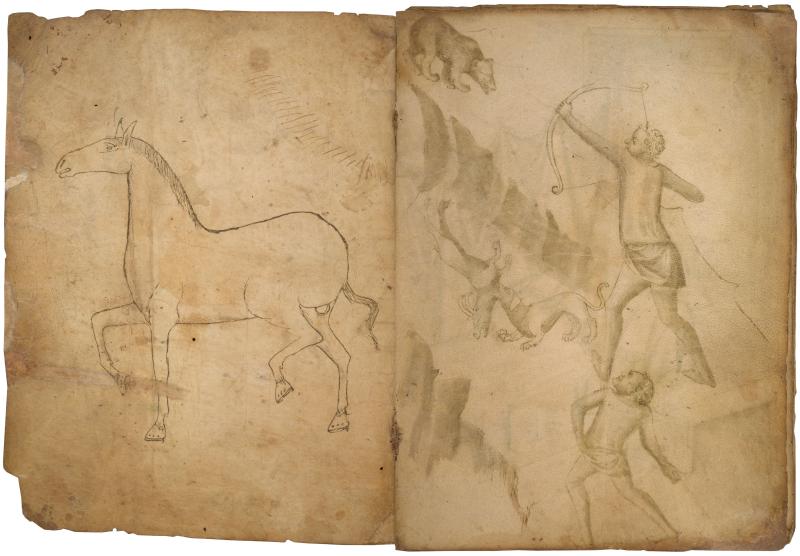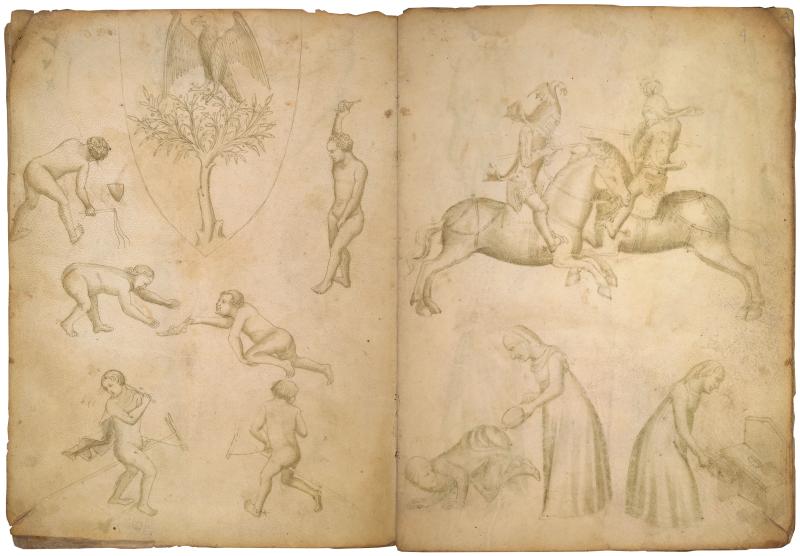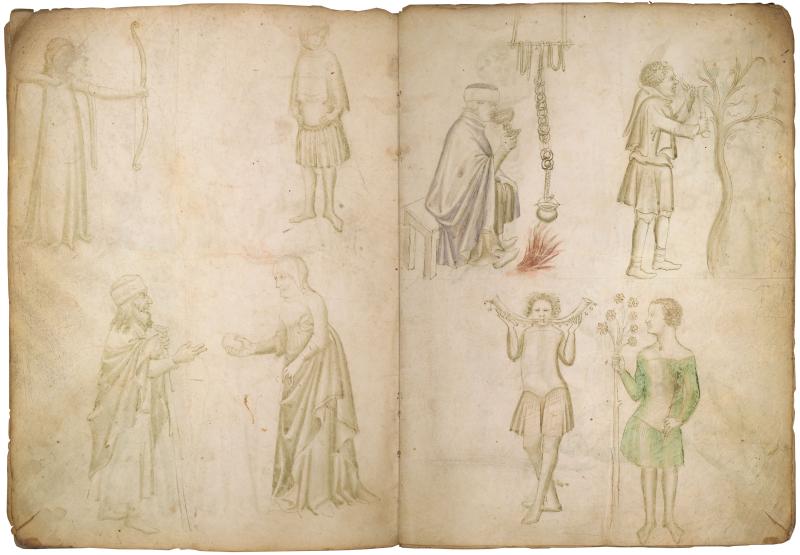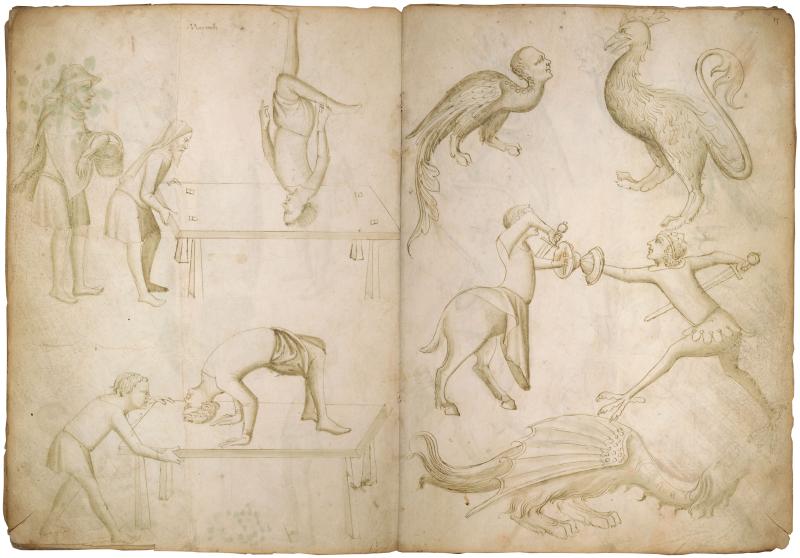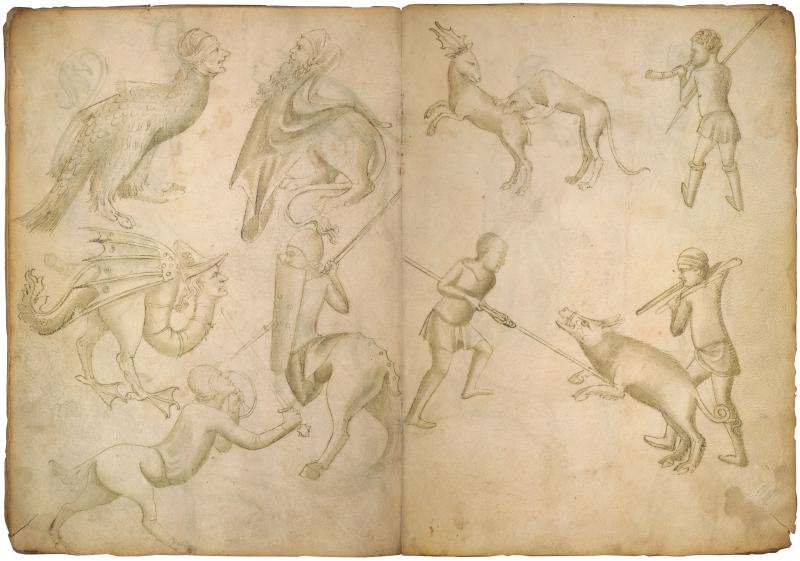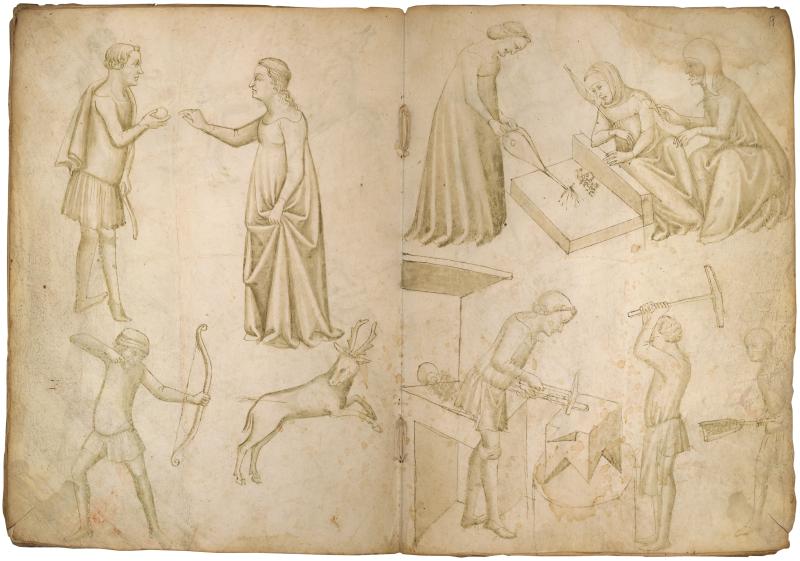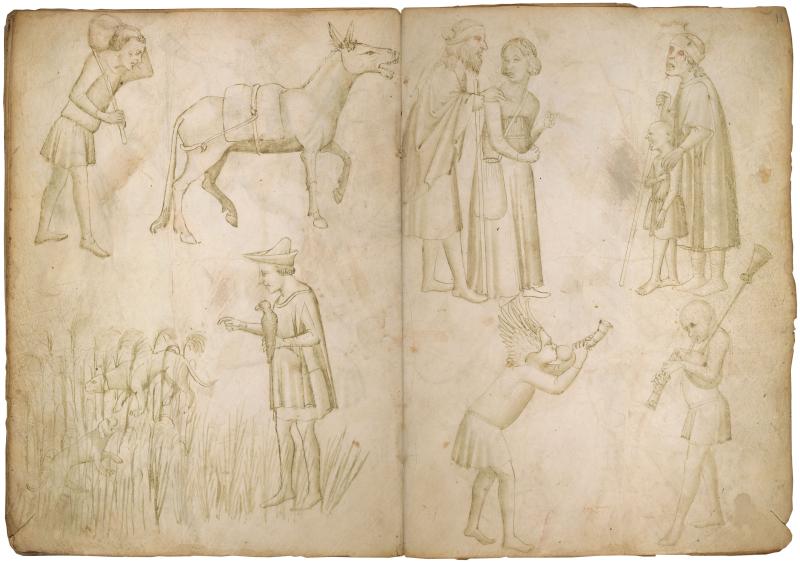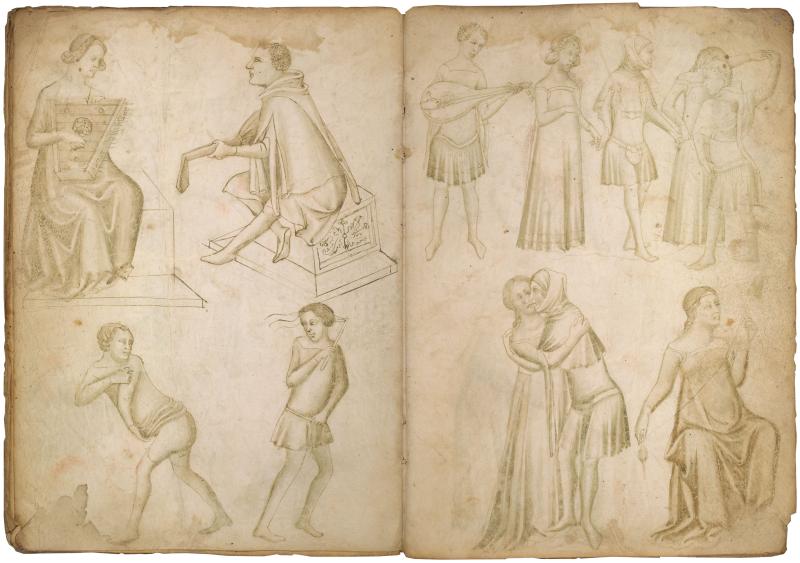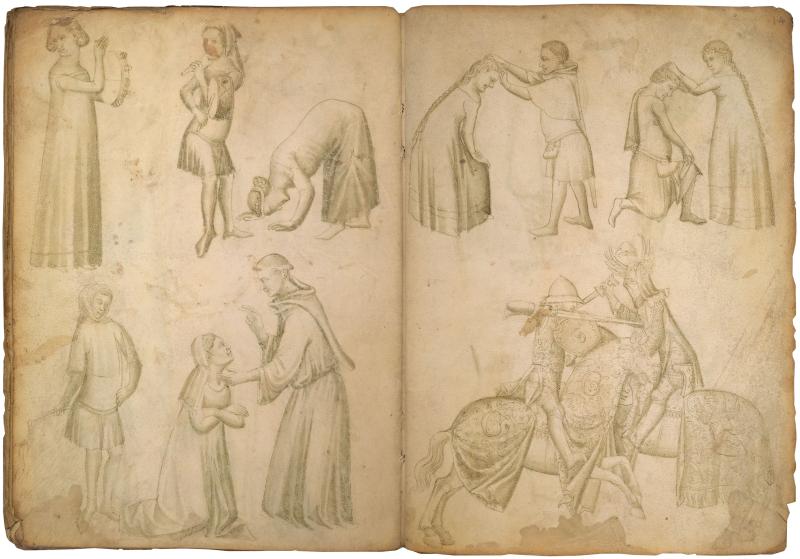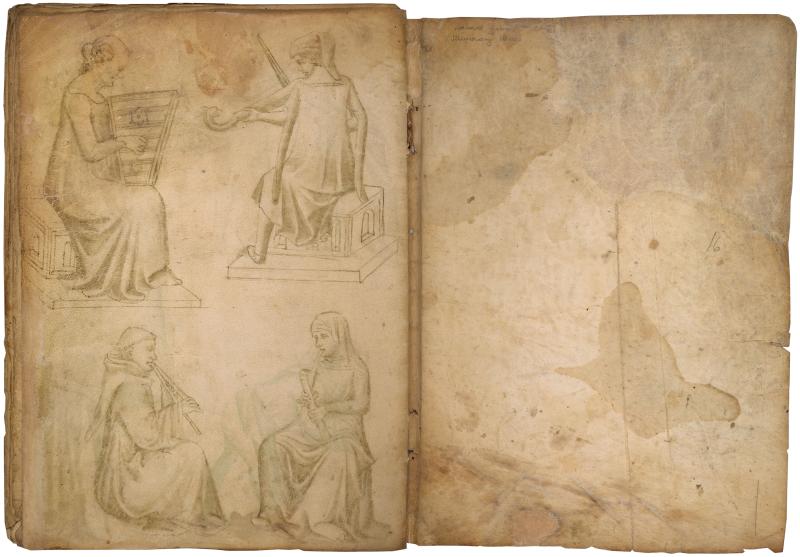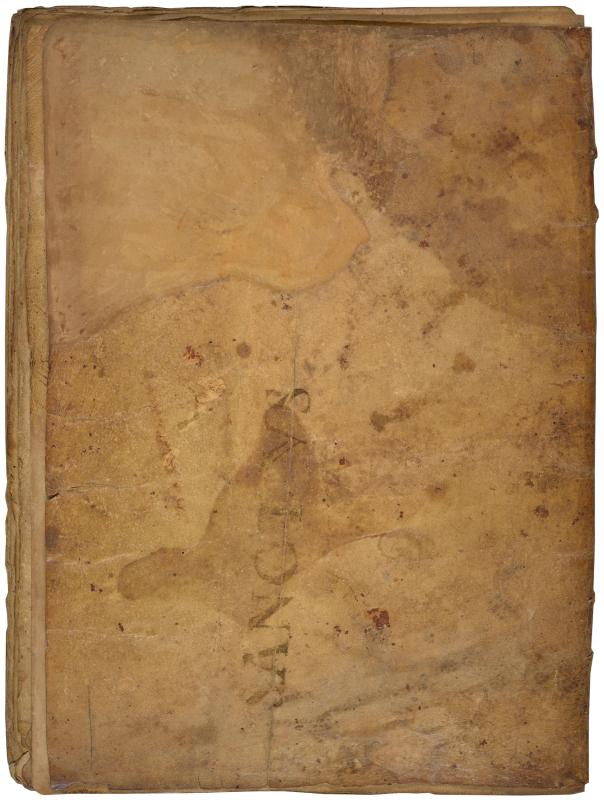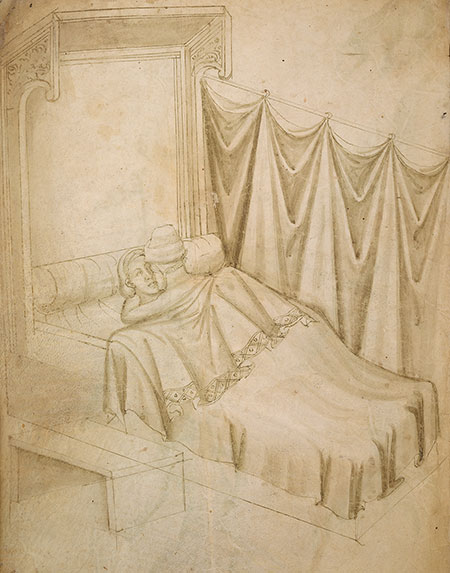
This fourteenth-century model book consists of eight parchment bifolios containing a total of more than seventy different drawings. Based on the analysis of both the drawing style and the costumes of the figures, the model book has been traditionally dated around 1370. The drawings are all executed with fine contour lines in pen and brown ink, atop which green-gray wash, applied with a brush, was used to render the shadows and provide volume to the figures. Occasionally the drawings are enriched by touches of color, employed in a very restricted palette of purple, green, and red.
The numerous illustrations are all of secular subject matter and include the representation of the twelve months, of games and daily occupations, amorous encounters, images of hunting and falconry, heraldic devices, and scenes dealing with health matters.
Like other drawing books of the late Middle Ages and early Renaissance, this model book was clearly intended as a repertory of motifs to be preserved for study and reuse. The drawings share a largely uniform style that suggests that they were probably executed by a single hand or at least by artists working closely together in the same workshop, although scholars are divided on the question of whether the drawings were produced by a manuscript illuminator or a panel painter. The place of origin of the model book has also been a contested question, with Lombardy, Central Italy, and Naples all having been suggested.
In 1985 Luciano Bellosi noted the strong stylistic affinity of the drawings with the work of the Emilian painter Tomaso Barisini, known as Tomaso da Modena. While the lack of a corpus of drawings securely ascribed to Tomaso, or to any other artists in his circle, makes it impossible to confirm with certainty this attribution, the similarities between the figures in the model book and those in the artist’s frescoes are compelling.


